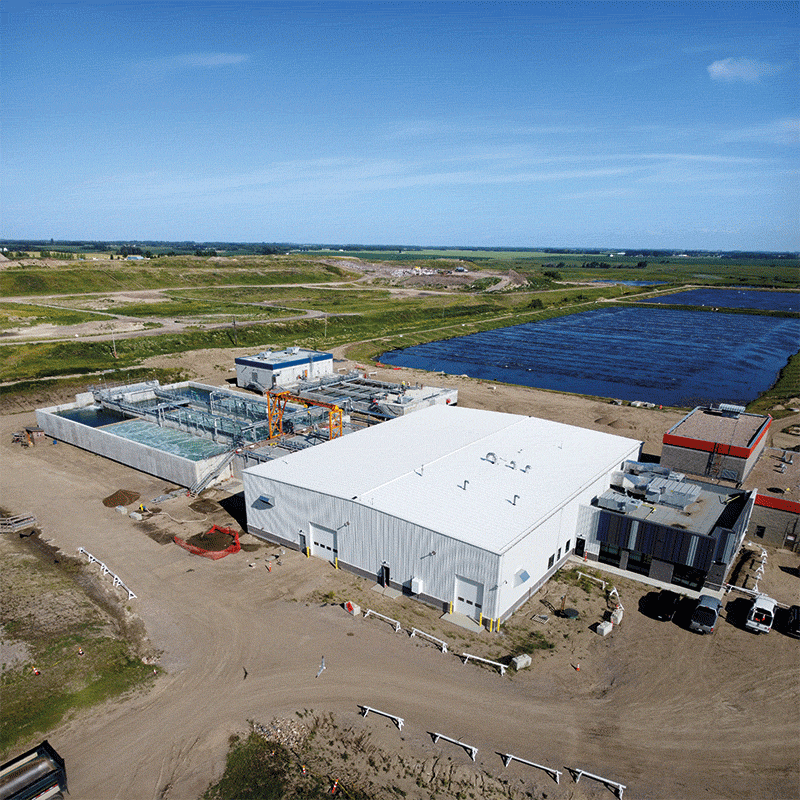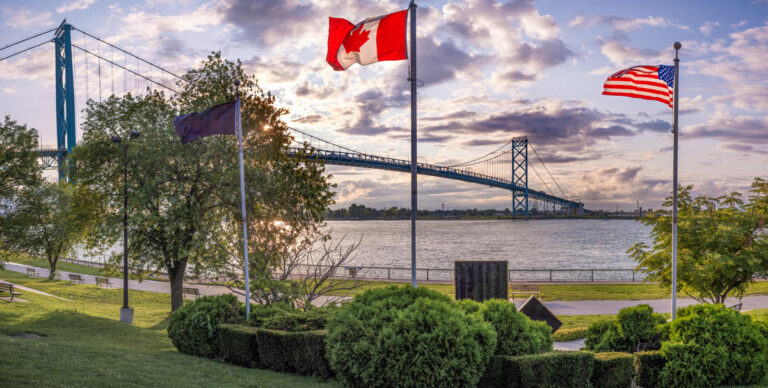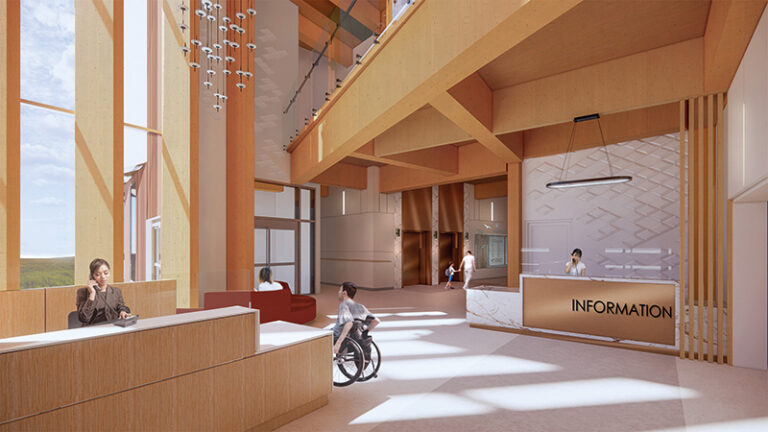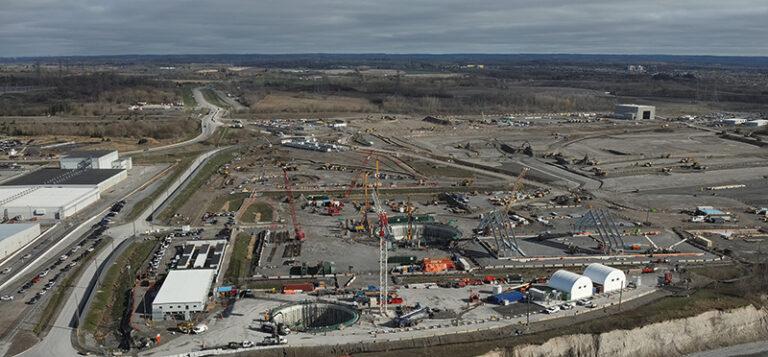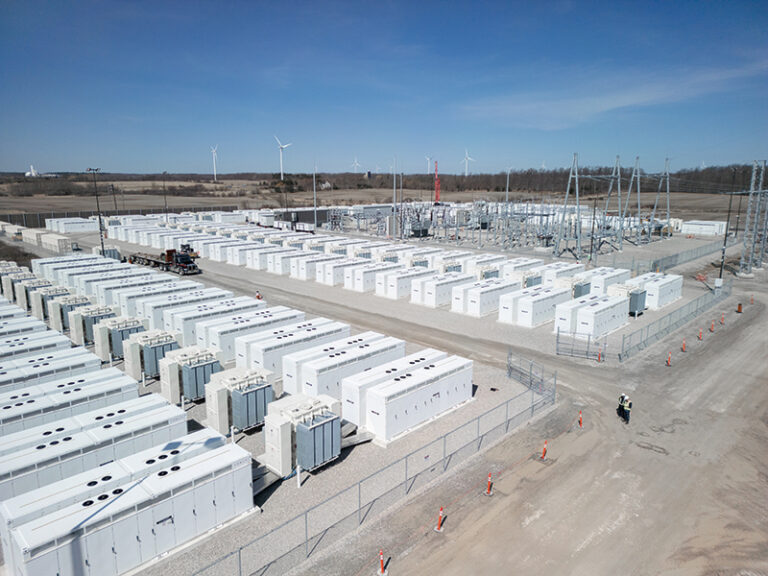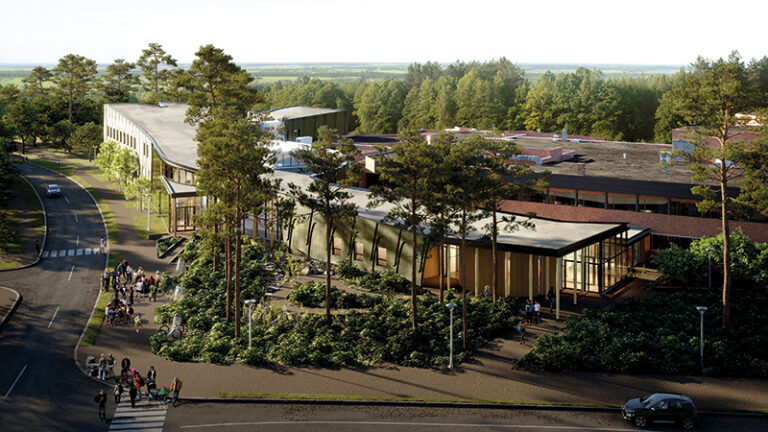By Mark Douglas Wessel
As a founding member of Lean Design Construction Canada (LDCC), and recently retired director of engineering with ISL Engineering, Deon Wilner (P. Eng) doesn’t mince words.
“I sometimes get so frustrated with how infrastructure projects are delivered within Canada and the cost overruns and the lack of responsibility or liability on a project,” he shared in a recent interview with Renew Canada. And he’s quick to reference his experience with the design build process over the course of his 32-year career as a major source of this frustration.
“Years ago, I was asked to head up a design build division. And I said no thank you, I am not interested in design build. I think that it’s broken. I think that design build, at the end of the construction process, is mired in court cases and legal issues. So, I wrote a memo to the board of directors saying [ISL] should look at integrated project delivery. Which wasn’t even in Canada at the time.”
That was in the spring of 2010 and just a few months later, Wilner joined ISL’s board of directors—proceeding to spearhead Lean Integrated Project Delivery (IPD) expertise on behalf of the company.
The dollars and sense of using IPD
Years later, in order to comply with new Canadian environmental wastewater and effluent requirements, the City of Lloydminster—straddling the border of Alberta and Saskatchewan—began planning construction of a new wastewater treatment which would be the largest, most capital-intensive infrastructure project in the city’s history. It would also become North America’s first wastewater treatment constructed using IPD.
In order to make the transition from an outdated lagoon facility, the city decided to build to a state-of-the art MBR (Membrane Bioreactor) treatment plant capable of removing ammonia, nitrogen and oil flows periodically entering the water from local businesses.
The use of MBR technology would also enable the city to produce much cleaner wastewater due to the fine membrane filtration used to remove smaller particles. The resulting effluent could then be suitable for industrial reuse in applications like cooling systems or irrigation, providing a source of income in the process.
The project was kickstarted in 2019 with an $81.5-million four-party funding agreement between the governments of Canada, Saskatchewan, Alberta, and the City of Lloydminster.
However, in hindsight, that figure could have fallen short by tens of millions of dollars had the project been tackled through more conventional means. “I do believe if we would have delivered this through standard procurement methods the final cost would have been in the $90 to $100 million range,” observes Don Stang, Lloydminster’s executive manager of operations.
In the end, the team tasked with constructing the facility by the city comprised of ISL Engineering and Land Services Ltd. as the consultant, Chandos/Bird joint venture as contractor, Veolia Water Technologies and Solutions as the main equipment vendor, and MagnaIV Engineering, the electrical, controls and systems integration consultant.
Reflecting on that commitment, Wilner recalls, “When we put our profit at risk as a team (and) at the time we did the original validation report as a team, we felt that we were about a million over that number, but we felt confident that there was lots of runway left and we could make up the differences as we went along.”
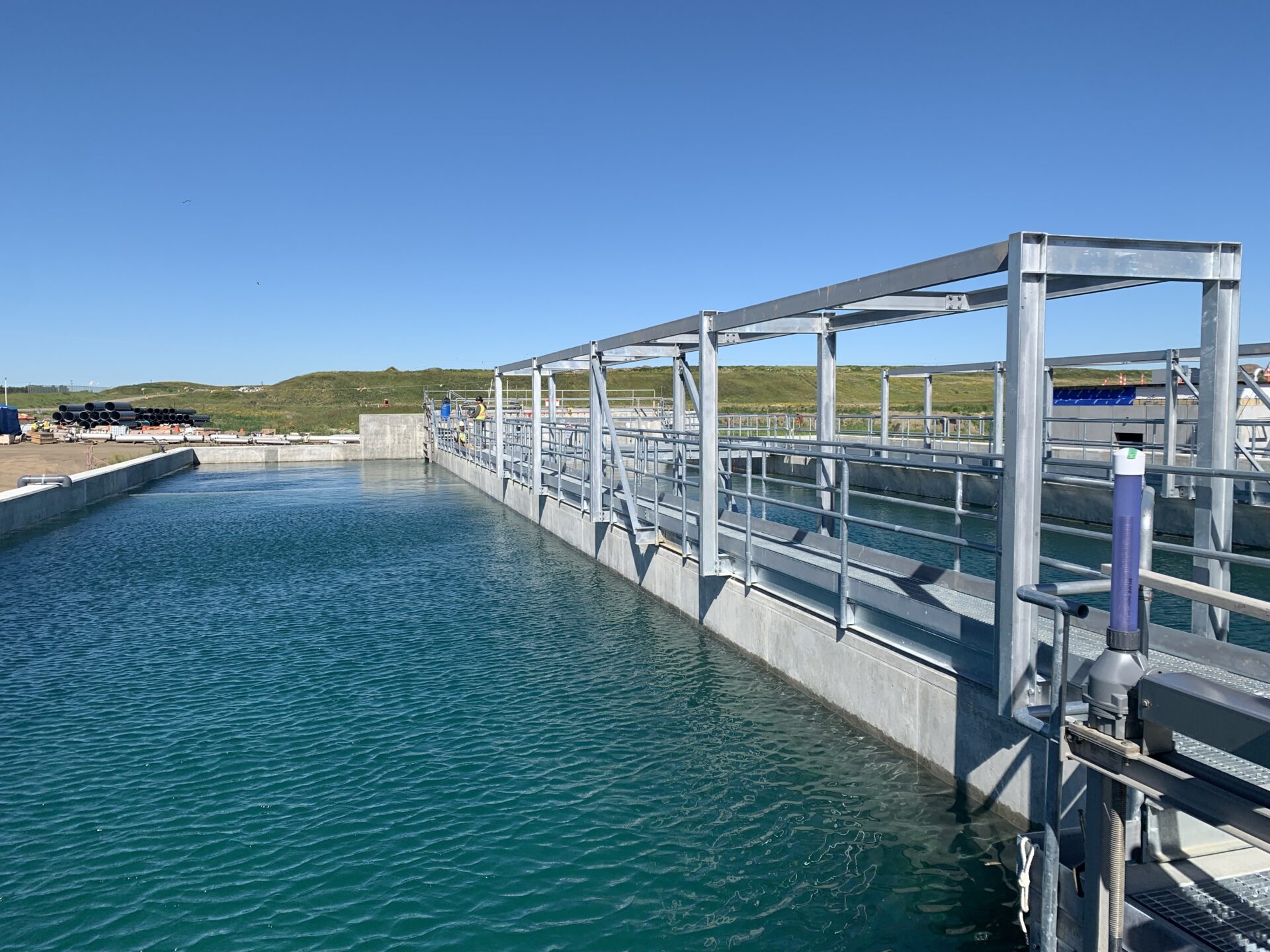
Getting onto the IPD runway
Stang is the first to admit that to deploy IPD, and realize the associated cost savings, Lloydminster needed to ensure the process met specific criteria to make it economically feasible. The city’s wastewater treatment plant “was the first one we’ve ever delivered through IPD [and] we wouldn’t use it for every capital project [because] it needs to be a large enough capital project [and] enough partners to make it worthwhile.”
As explained on Infrastructure Ontario’s website, “the fundamental difference between an IPD/Alliance and traditional contracts is the underlying principle of a non-adversarial approach between the contracting parties.”
An alliance contract that promotes a positive culture based on no-fault, no-blame and unanimous decision-making. And requires all participants to find the “best for project” solutions… with a greater time commitment on the owner’s part, but one whereby efficiencies and win-win situations are maximized.
The “win-win” formula alluded to—using the Lloydminster project as an example—is that while the overhead costs of the participating teams would be covered from the get-go, if it had gone over budget any profit would disappear. Instead, thanks to the collective expertise and problem solving that went into the project, the final cost was approximately $80-million or about $1.5 million below what was budgeted. Meaning that half of that surplus goes back to the city with the other half split between the remaining four partners.
So IPD’s collaborative, shared risk approach is a radical departure from design bid build: whereby the owner issues an initial contract with a design firm and a second contract is issued to a contractor which must then find a way to make the project work including trying to meet the budget and completion targets set. Essentially then painting the contractor into a corner in which historically, those prescribed conditions frequently aren’t met. A construction process which Wilner says often ends “mired in court cases and legal issues.”
Before takeoff
Kyle Strachan (P. Eng), Chandos Construction’s project director for the Lloydminster plant says a key starting point in the IPD process was early contractor engagement whereby the participating companies were brought on board before any design work was done to participate in the initial, validation phase.
“Validation focuses on three main things,” he observes. “Determining what we’re going to build, that we can build it in this amount of time, and we can agree that it’s going to cost this much. And that validation process gets you to about 30 per cent design roughly. And then we handed it over to the city council to sign off on.”
Strachan adds that getting all the partners to commit to the final budget of $81.5 million “was pretty unique. We were committing to the price of the project with a lot less information than typical delivery methods,” he says. “The reason for that is there’s an intense phase of collaboration where even though the design has not progressed to the same level of detail as it normally would, there’s a greater understanding because everyone’s involved.”
Once validated, which took an estimated eight months, the team then “went through the detailed design and we were able to look at a lot of efficiencies [and] ways to simplify structures,” observes Strachan, while at the same time posing such questions as “How can we purpose different parts of the treatment to do multiple things?”
Navigating bumps along the runway
Remarkably, during the validation process ISL’s Wilner pushed for a design change.
The added cost was brought on by the need to design for an alternative discharge of influent for the wastewater treatment facility over concerns expressed by the plant manager of hydrocarbons getting stuck to the coarse screens of the membrane bioreactors. Which in turn could have led to potentially huge repair and replacement costs.
To prevent that from happening, ultimately what was decided explains Wilner is “we put in an influent pump station… so that in the event of major storm events we could bypass to lagoons. We could also take oil to the lagoons if we had to or take it to the primary clarifiers [with] three primary clarifiers in parallel that could then separate the oil and then can be disposed of.”
It’s worth noting the pump station is a significant add-on and not typical of what would be used by similar-sized municipalities (approximately 30,000 residents). But the reality is in a city dubbed the ‘Heavy Oil Capital of the World,’ such contaminants still make their way into the waterways via local businesses and industries despite efforts to encourage best practices for disposal.
Despite that added cost, Wilner says the overarching mindset for taking these steps was “to protect the interest of the city of Lloydminster… and the environment… and the project,” instead of blindly prioritizing cost reduction for the sake of making a bigger profit.
Ultimately what resulted in the project coming in under budget were numerous cost-saving design tweaks. Tweaks made thanks to the one-for-all, all-for-one mindset the team embraced.
One example Chandos’ Strachan gives was the decision to opt for a pre-engineered building. “With a pre-engineered building, there’s a lot of optimization that goes into the steel member design,” he says, adding that “we did a detailed choosing by advantages (method) to decide on the pre-engineered building, because it’s not all positives.”
Strachan says there is a great deal of coordination that goes into selecting pre-engineered structures, “but from a square-foot perspective, there’s definitely an advantage we see in selecting these kinds of buildings.” Including cost savings, less waste and lower maintenance requirements.
However, Strachan is quick to add that pre-engineered buildings aren’t always a slam dunk. “It depends on the market [and] if there is an installer that can put up a building that size in the area.”
In the case of the Lloydminster project there did happen to be a couple of local suppliers, “so we said, okay, this is a viable building that we can install (because) the most competitive person is usually the one who’s local,” Strachan observes. As opposed to using an outside company that have brought in workers which in turn would have added travel costs to the bottom line.
Yet another cost savings example given by Wilner pertains to the overflow trough, which serves to contain surplus wastewater until the plant has the capacity to treat it.
“That overflow was originally to be stainless steel. The contractor said to the team: ‘I want to build this in stainless steel. It’s quick, it’s easy. I can manufacture it off site. I can bring it to site and bolt it on, and I’m done,’” Wilner recalls. “But then stainless-steel prices went through the roof, and we asked ourselves, ‘What do we do?’ So, a week before we were supposed to start manufacturing in stainless steel, we ran some numbers (and found) it would be half the price if we went back and did it in concrete.”
Wilner estimates the cost savings for that change was $35,000, “which is not much for an $81.5-million project. But do that over and over and that’s where your savings come in.” All made possible he says, because the team was “nimbler” than it would have been with design build.
From takeoff to landing
Construction of the plant took place during the pandemic and that contributed to “some of the country’s worst supply chain issues we’ve seen in 30, 40 years,” recalls Stang. Despite that challenge, remarkably “we had zero change orders on the project.”
One of the primary reasons they were able to avoid such cost overruns was “our project management team were the ones in the trenches every day and making sure that project moved forward,” says Stang. “Not that we have a history of having lots of project overrun—but I mean, those do happen—especially on large projects where there are a lot more complexities and a lot more components to go sideways in a capital project.”
In the case of the Lloydminster wastewater treatment plant, Stang speaks glowingly of how the IPD process ultimately contributed to the success of the project. Including, laying the groundwork for a highly skilled and experienced team that adopted a hands-on, collaborative, problem solving approach to ensure a soft landing.
“I believe the integrated project delivery method we chose absolutely hit the mark. We delivered it on time and under budget through a pandemic and I’m proud of that.”
Mark Douglas Wessel is an urban journalist and communications consultant. He writes a regular column called Green Living for Postmedia.
[This article appeared in the November/December 2024 issue of ReNew Canada.]
Featured image: The new $80-million wastewater treatment plant was funded by the governments of Canada, Saskatchewan, Alberta and the City of Lloydminster. (Chados Construction)

